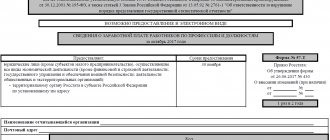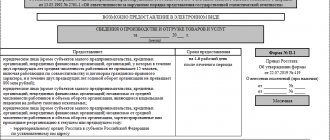Transfer deed during reorganization is a document legally confirming the reorganization of the company. From time to time, a company needs to reorganize. At the moment, there is no single accepted form of transfer act during reorganization. Let's consider the main aspects of document formation.
Drawing up a transfer deed is necessary if one of the forms of reorganization is carried out: merger, transformation and absorption. In case of a takeover, the act is executed only by the acquired company.
Requirements for having a PA
| Type of reorganization | Federal Law “On JSC” | Civil Code |
| Merger | PA | No PA requirement |
| Accession | PA | No PA requirement |
| Separation | Separation balance | PA |
| Selection | Separation balance | PA |
| Conversion | PA | No PA requirement |
Why do you need a PA?
The reorganized company, before liquidating its activities in its previous form, formalizes the transfer of rights and obligations, as well as debts of the company that is the legal successor.
The PA specifies the entire list of obligations of the reorganized enterprise to creditors and debtors, transferred to the successor organization. At the same time, the PA includes, among other things, obligations disputed by the parties. Even the rights and obligations that arose after the drafting of the PA are subject to transfer to the legal successor until the state registration of the outcome of the reorganization process.
The decision to reorganize an enterprise in accordance with Article 57 of the Civil Code of the Russian Federation is made by its founders (participants) at a general (extraordinary) meeting. Or it is carried out by decision of a body of a legal entity authorized by the constituent document.
Important! Drawing up the transfer deed is the responsibility of the organization subject to reorganization.
Legal basis
Reorganization in the form of annexation is discussed in Federal Law 208, Article 10 and Federal Law 14, Article 53.
With this form, several legal entities, upon merger, transfer their responsibilities to counterparties, as well as the rights and privileges of the main company. And the latter becomes the owner of all these rights, responsibilities and privileges.
Please note that individual entrepreneurs are not a legal entity. And affiliation is an elegant way for a legal organization to cease to exist. The most common reason for this type of reorganization is the commercial benefit of the owner. The transfer deed is issued to the buyers of the company.
Moreover, according to Article 57 of the Civil Code, everything described will come into force only after the corresponding entry on the liquidation of the merging organization appears in the state register of companies.
Contents of PA
The reorganized company registers in the PA all creditor and receivable obligations (including disputed ones) that arose at the time of its preparation.
The preparation of the PA is based on the use of “Methodological guidelines for the preparation of financial statements” dated May 20, 2003 No. 44n, although they contain somewhat outdated examples of financial statements with the term “separation balance sheet” abolished. Taking into account the new No. 402-FZ dated December 6, 2011 “On Accounting”.
The transfer act reflects the financial results of the enterprise:
- balance sheet;
- information about the contents of assets;
- information about the contents of liabilities;
- the value of all property of the organization;
- detailed information about receivables and payables.
This economic information is generated on the basis of financial statements for the formation of a transfer act (or a final or separation balance sheet) and is carried out in accordance with the decision of the founders, which is prescribed in the laws:
- “On JSC” December 26, 1995 No. 208-FZ (as amended on June 2, 2016)
- “On LLC” 02/08/1998 No. 14-FZ (as amended on 12/29/2015);
The current legislative acts do not prescribe specific rules for the design of PA, indicating only its general structure. Therefore, the form of the act and the content of the information included in it is determined by the minutes of the scheduled or extraordinary meeting of participants of the company initiating the reorganization.
A typical sample PA, compiled for any type of reorganization, consists of the following information blocks:
- title of the act;
- date and place of drawing up the act;
- name of the legal entity that drew up the act;
- text declaring the transfer of rights and obligations from the transferring company to the receiving company;
- a list of transferred assets according to the financial statements indicating the total book value of: fixed assets;
- materials;
- intangible assets;
- funds in a bank account;
- mutual settlements with debtors.
- list of transferred liabilities according to financial statements: debts on taxes and fees;
- salary arrears;
- debt to contractors and suppliers.
- accounts payable and receivable;
- signatures from both parties;
- fact and date of approval of the act.
If there are a large number of documents confirming assets and liabilities, they are included in the appendices to this act, which are its integral part:
- balance sheet;
- primary accounting documents of material assets;
- property inventory statements;
- originals of concluded contracts;
- list of claims and lawsuits filed;
- acts of reconciliation with counterparties;
- acts of reconciliation with budgetary entities;
- personnel documentation.
Top list of mistakes during reorganization in the form of separation, which can become fatal
Making certain mistakes during reorganization in the form of separation may result in invalidation of the registration of the created legal entity. Let's analyze these mistakes so that conscientious entities can avoid committing them and minimize the risk of negative consequences.
Note: When reorganizing an economic entity in the form of a spin-off, one or more new economic entities and (or) legal entities of other organizational and legal forms are created. They are transferred to part of the rights and responsibilities of the reorganized economic company <*>. By signing the application for registration of such person(s), the founders confirm that the information in the submitted documents is reliable and the procedure for creating a legal entity has been followed <*>. Providing false information may result in the registration being invalidated <*>. Within three years from the date of registration of a business entity, persons whose rights and legitimate interests were violated may appeal the registration in the court considering economic cases <*>. In most cases, such persons are creditors of the reorganized organization.
We analyzed the judicial practice of invalidating the registration of commercial organizations created as a result of the reorganization of economic entities in the form of a spin-off. This made it possible to form a top list of the main violations that occurred in 2017–2018. resulted in the cancellation of the reorganization due to claims of creditors.
Error 1. Violation of the procedure for notifying creditors
This is the most common basis on which creditors go to court with a claim to invalidate the registration of business entities created as a result of the reorganization of business entities in the form of a spin-off.
In order to protect the rights of creditors during the reorganization of a business entity, the Law gives them the right to demand termination or early fulfillment of obligations by the debtor - the reorganized business entity, and compensation for losses.
To enable the exercise of this right, the reorganized business entity or the body that made the decision on reorganization must notify the creditor in writing within 30 days. He, in turn, may, within 30 days from the date of sending such notice to him, present a written demand to the reorganized economic company <*>.
Let's consider in what cases the court can conclude that the reorganized business entity violated the procedure for notifying creditors and, by abusing the right to reorganization, evaded fulfilling its obligations.
1. The economic society did not notify creditors. It is obvious that if the reorganized business entity has not drawn up and sent notices to creditors, they do not have the opportunity to exercise the right guaranteed by law to demand termination or early fulfillment of an obligation.
2. The business entity notified creditors within 30 days from the date of the decision on reorganization. But by the time they received the notifications, the registration of the successor had already taken place.
In practice, there are quite often cases when a business entity sends notifications within the period established by the Law, but creditors receive them after the registration of the legal successor. Formally, the requirements of the Law are not violated. However, creditors do not have the opportunity to exercise the right guaranteed by law. Therefore, the court recognizes such a notification as an abuse of the debtor’s right.
3. The business entity notified creditors within 30 days from the date of the decision on reorganization. But the successor was registered before the expiration of the 30-day period established by the Law for submitting creditors' claims.
If, according to the separation balance sheet, the business entity transferred the accounts payable to the legal successor before the expiration of the 30-day period from the date of sending the notification, creditors cannot exercise the rights guaranteed to them by Law.
Example 1 The court invalidated the registration of LLC “S”. From the case materials it followed that the economic entity promptly sent notice of the reorganization to creditors. However, the successor, LLC "S", was registered before the expiration of the 30-day period from the date of notification to creditors from whom claims were not received. The court satisfied the claims, since the notice of reorganization is sent to find out the direction of the creditor’s will for termination (including due execution from the reorganized business entity itself in accordance with Article 379 of the Civil Code) or for early fulfillment of obligations. From a comprehensive interpretation of the legislation, it follows that a separation balance can be formed only after receiving a response from creditors or after a 30-day period has passed after sending them a notice (if no claims have been received from them).
4. The business entity notified the creditor at the wrong address.
Example 2 The court invalidated the registration of LLC “F”. The defendant (the business entity being reorganized) promptly sent notice of the reorganization to the plaintiff (creditor) to the address specified in the constituent documents. However, after the expiration of the storage period, the letter was returned to the defendant. The court granted the claims because the creditor was in the process of liquidation. From the date of appointment of the liquidator, it was he who was the executive body of the liquidated entity. In such a situation, the location of the legal entity is determined by the location of the liquidator. Therefore, in this case, the creditor had to be notified at the location of the liquidator. The court considered the notification of the creditor at the address known to the debtor to be insufficient, based on the following. Information that the creditor is in the process of liquidation, as well as information about the location of the liquidator, is publicly available on the Internet on the official website of the legal scientific and practical journal “Justice of Belarus”. Consequently, the reorganized business entity could and should have obtained information about the proper address of the creditor before sending a notice of reorganization.
Mistake 2. Lack of goal to carry out entrepreneurial activities
The main goal of commercial organizations is to make a profit. Facts confirming that the person created as a result of the reorganization does not have the intention to carry out entrepreneurial activities may indicate the debtor’s desire, through the reorganization, to evade fulfillment of obligations to creditors.
These facts include: - absence of an executive body. This can be confirmed by the lack of information about the executive body in the tax authorities or the registration authority; — failure of the created entity to carry out economic activities. It can be expressed in failure to submit tax returns to the tax authorities, absence of: movement of money through the account; information about the presence of employees with the necessary qualifications; fixed assets, without which it is impossible to carry out the type of activity declared during state registration; — absence of the subject at the address specified during registration. It can be confirmed, among other things, by the fact of the return of court correspondence, photographs of the property where the legal address of the subject is located; — failure by the reorganized business company to transfer to the created entity the money that was received from debtors after the registration of the successor of the business company.
Error 3. Failure to secure obligations with assets as a result of reorganization
This entails the impossibility of fulfilling the demands of creditors. This situation arises when the entity being created is transferred to accounts payable that are not adequately secured by assets. The opposite situation also happens: all liquid assets or most of them are transferred to the created entity. At the same time, the reorganized business entity still has accounts payable that are not secured by assets.
But even if, according to the separation balance sheet, accounts payable are secured by assets, the distribution of assets and liabilities may violate the rights and legitimate interests of creditors. This happens when debt to creditors is secured by unrecoverable receivables. The following facts may indicate its illiquidity: - the receivables' statute of limitations has expired; — debtors at the time of reorganization are in the process of economic insolvency (bankruptcy); — debtors do not confirm the existence of debt to the reorganized entity in full or in part; — the debtor cannot fulfill obligations to other creditors because he has debts on taxes and fees and other obligatory payments. This can be confirmed, among other things, by information on the Ministry of Taxation website.
Mistake 4. Failure to take inventory
When reorganizing a legal entity, before drawing up a separation balance sheet, it is necessary to conduct an inventory of its assets and liabilities <*>.
Properly executed documents based on the results of the inventory indicate that the business entity, before drawing up the separation balance sheet, checked the presence and condition of assets and liabilities and gave them an assessment. The absence of such documents in combination with other facts may indicate a formal approach to the reorganization of officials of the reorganized entity.
Error 5. Violations in drawing up the separation balance sheet
Such violations may indicate the intention of the reorganized business entity to evade fulfillment of obligations to creditors. Among the main violations, we highlight the following: - in the separation balance sheet there are no provisions on succession for all obligations of the reorganized business entity (including obligations disputed by the parties) in relation to all its creditors and debtors <*>; — the business entity drew up and approved the separation balance sheet before the expiration of the period given to creditors to exercise their rights; - the business entity included in the separation balance sheet obligations to the creditor, from whom, within the period established by the Law, a demand was received to terminate or fulfill the obligation ahead of schedule.
In conclusion, we note that the presence of any of the above violations during the reorganization does not mean that the court will unconditionally satisfy the creditor’s claims. The court evaluates the evidence presented in its entirety and determines whether the violations resulted in negative consequences for the creditor.
Thus, the court may not recognize the failure to notify the creditor as an abuse of right on the part of the reorganized entity if the entity created as a result of the reorganization has repaid the debt to this creditor.
Published in the journal “Industrial and Trade Law”, 2022, No. 6
Approval of the transfer deed
The mandatory approval of the PA is clearly stated in the Civil Code of the Russian Federation, laws No. 14-FZ of 02/08/1998, N 208-FZ of 12/26/1995 and No. 402-FZ of 12/06/2011.
The transfer act during reorganization is approved at general meetings of participants in the reorganization process:
- in case of a merger - each of the companies participating in the reorganization;
- upon merger - participants of the company being merged;
- in case of division - participants of the divided company;
- in case of separation - participants of the society from which the new one is separated;
- during transformation - participants of the reorganized company.
The fact of PA approval is confirmed by a protocol, a link to which is indicated in the “Approved” block.
Important! Without approval by the initiators of the reorganization, the act is considered invalid.
Initial stage of joining
A merger is a form of reorganization in which one or more organizations cease to exist as separate legal entities and become part of another company.
In what follows, for simplicity, we will refer to the affiliating organization as the “main” organization. The starting point is for the owners to make an appropriate decision. It must be sent to the “registering” Federal Tax Service within three working days, along with a written message about the start of the accession. Having received these papers, inspectors must make an entry in the state register stating that the companies are in the process of reorganization. Officials are given three working days for this.
In addition, companies are required to inform the Pension Fund and the Social Insurance Fund office in writing about the upcoming accession. This should also be done within three working days (clause 3 of part 3 of article 28 of the Federal Law of July 24, 2009 No. 212-FZ).
Then twice, at intervals of a month, a notice of the reorganization is supposed to be published in special publications. And also, within five working days from the date of filing the application with the Federal Tax Service, notify all known creditors about the initiated process (Article 13.1 of the Federal Law of 08.08.01 No. 129-FZ “On State Registration of Legal Entities and Individual Entrepreneurs”).
Next, you should prepare a new version of the constituent documents of the company, which is being joined by another legal entity. At this stage, it is also necessary to conduct an inventory of the property and obligations of all participants - and the joining organization. This is stated in paragraph 2 of Article 12 of the Federal Law of November 21, 1996 No. 129-FZ “On Accounting”.
PA approval date
It is recommended that PA be drawn up at the end of the accounting reporting period or when preparing interim reporting. The PA may be approved throughout the reorganization process.
After passing all the formalities, the approved act is transferred to the Federal Tax Service as part of the documentation for further registration in the Unified State Register of Legal Entities.
Attention! If between the date of approval of the PA and the date of state registration of the new legal entity, the reorganized enterprise continued to operate, then to the already compiled documents it is necessary to add all the documentation about newly arising rights and obligations that were not included in the primary PA.
Post Views: 494








